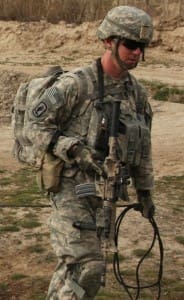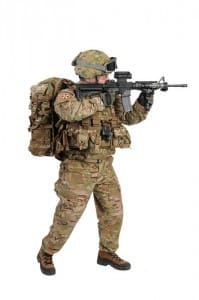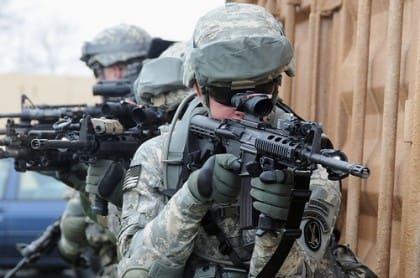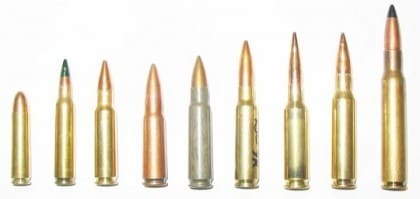And so it begins…well actually it began awhile ago but Phase IV of the Army’s camo program is gaining steam and Natick in conjunction with PEO-Soldier released a Sources Sought Notice yesterday for camouflage patterns. SSD was also able to speak with PEO Soldier’s COL William Cole and LTC Mike Sloane about the situation.
The Army is seeking a family of three different camo patterns including woodland, desert and, transitional (sometime called universal), and one pattern for personal equipment (such as body armor, ammo pouches and rucksacks) which works with all three (3) uniform camouflage patterns. The idea behind the family of patterns is to give Army leaders and Combatant Commanders options. The document goes on to describe a family of patterns as “A family is considered to be of the same or similar geometry with coordinating color palettes to cross the global operating environments. Global operating environments are defined by a geographic classification system that subdivides the global landmasses into areas with similar environmental characteristics.” So ultimately, they are seeking three and possibly four patterns that share basic composition. Sharing basic geometries can be used for identification purposes as well to streamline with supply chain with common printing screens. One option for the family of patterns is that the transitional or universal pattern will be issued in the clothing bag to all Soldiers and the woodland desert patterns would be special issue to those operating in those environments.
The Sources Sought Notice goes on to describe how the patterns will be evaluated. This methodology can be used in both a photosimulation study as well live field tests.
“The woodland pattern may be evaluated in forest, full ground cover, cropland and jungle terrain at distances between 35 and 400 meters.
The desert pattern may be evaluated in low sandy desert and high rocky desert terrain at distances between 35 and 500 meters.
The transitional pattern may be evaluated in both woodland and desert terrain types at the distances cited above.
All evaluations will be made with a subject mannequin and/or human wearing a uniform in the evaluated pattern and a body armor vest with ammo pouches in the family personal equipment pattern.
The primary method for evaluating uniform and personal equipment pattern effectiveness will be determining the distance at which observers have a 50% probability of detecting the camouflaged test subject; the shorter the distance the more effective the camouflage.
The secondary method for evaluating pattern effectiveness, to be used in instances where all patterns are detected at the same range, will be the relative time to detection; the longer the time to detection the more effective the camouflage.
Near IR performance will also be evaluated at distances from 35 and 200 meters. The patterns will be evaluated for Near IR performance in the same terrain types as for daylight performance.”
The big issue here is options. The camouflage team which is comprised not only of PEO-Soldier and Natick but also such stake holders as the Maneuver Center of Excellence, Naval Research Labs, USASOC, and the AWG has to brief the Army leadership on their plan of action in July. This plan not only offers choices but also economizes them through a common pattern geometry for uniforms as well as a common OCIE pattern.
COL Cole said that he expected to see a new family of patterns enter service within two years saying “We want to conduct rigorous testing. This is not a fashion contest.” What is clear is that no one wants to rush into a solution but rather, the Army would like to conduct full testing in all terrain environments and all seasons. Additionally, LTC Sloane added, the Army wants to ensure that they conduct a thorough threat analysis placing the correct emphasis on probable areas of operation.
At this point, the Army is trying to ascertain the state of industry to support this requirement and to give everyone a heads up. Offerors have one month to respond and we are looking forward to seeing what industry comes up with once a full blown solicitation is released.




















































































































